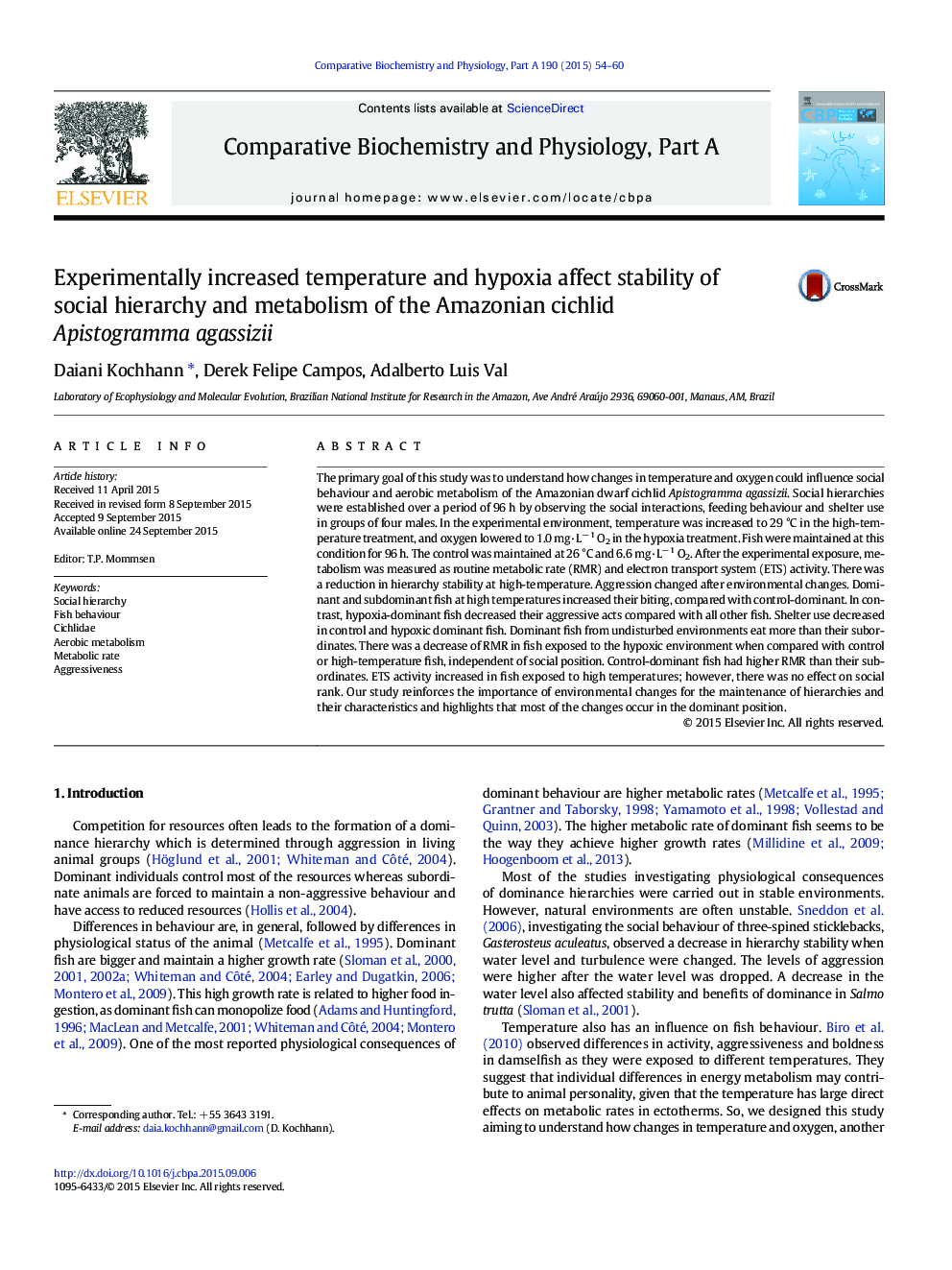| Article ID | Journal | Published Year | Pages | File Type |
|---|---|---|---|---|
| 1971891 | Comparative Biochemistry and Physiology Part A: Molecular & Integrative Physiology | 2015 | 7 Pages |
The primary goal of this study was to understand how changes in temperature and oxygen could influence social behaviour and aerobic metabolism of the Amazonian dwarf cichlid Apistogramma agassizii. Social hierarchies were established over a period of 96 h by observing the social interactions, feeding behaviour and shelter use in groups of four males. In the experimental environment, temperature was increased to 29 °C in the high-temperature treatment, and oxygen lowered to 1.0 mg·L− 1 O2 in the hypoxia treatment. Fish were maintained at this condition for 96 h. The control was maintained at 26 °C and 6.6 mg·L− 1 O2. After the experimental exposure, metabolism was measured as routine metabolic rate (RMR) and electron transport system (ETS) activity. There was a reduction in hierarchy stability at high-temperature. Aggression changed after environmental changes. Dominant and subdominant fish at high temperatures increased their biting, compared with control-dominant. In contrast, hypoxia-dominant fish decreased their aggressive acts compared with all other fish. Shelter use decreased in control and hypoxic dominant fish. Dominant fish from undisturbed environments eat more than their subordinates. There was a decrease of RMR in fish exposed to the hypoxic environment when compared with control or high-temperature fish, independent of social position. Control-dominant fish had higher RMR than their subordinates. ETS activity increased in fish exposed to high temperatures; however, there was no effect on social rank. Our study reinforces the importance of environmental changes for the maintenance of hierarchies and their characteristics and highlights that most of the changes occur in the dominant position.
